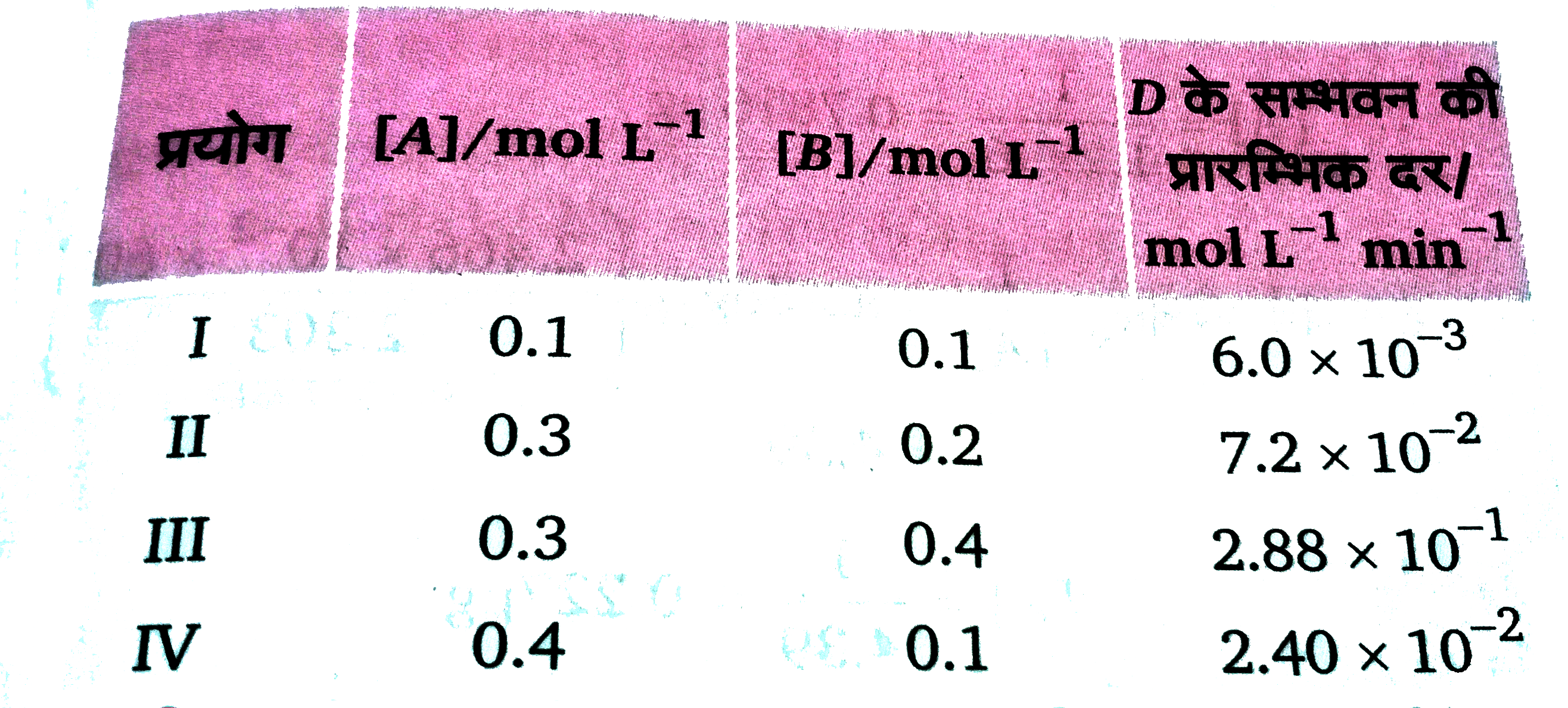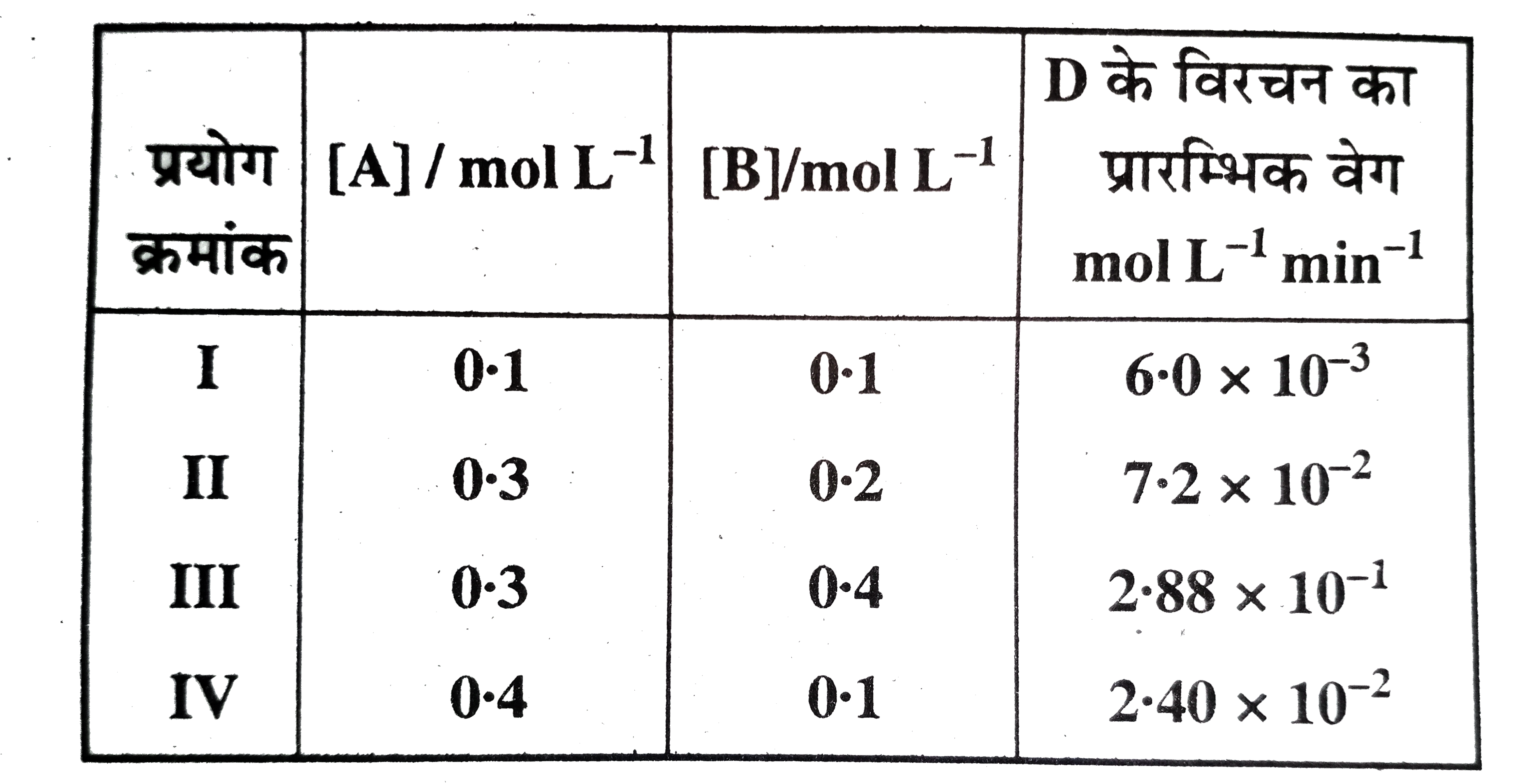The following results have been obtained during the kinetic studies of the reaction: 2A+B→C+D Determine the rate law and the rate constant for the reaction. (##VPU_HSS_CHE_XII_C04_E02_011##)Solution in Malayalam
Step by step video & image solution for The following results have been obtained during the kinetic studies of the reaction: 2 A+B rarr C+D Determine the rate law and the rate constant for the reaction. (##VPU_HSS_CHE_XII_C04_E02_011##) by Chemistry experts to help you in doubts & scoring excellent marks in Class 12 exams.
Updated on:21/07/2023Topper's Solved these Questions
Similar Questions
Glucose or sucrose are soluble in water, but,cyclohexane or benzene (simple six membered ring compounds) are insoluble in water. Explain.
View SolutionSleeping pills are recommended by doctors' to the patients suffering from sleeplessness but it is not advisable to take its doses without consultation with the doctor. Why?
View SolutionRate law for the reaction, A+2B→C is found to be
Rate =k[A][B]
Concentration of reactant 'B' is doubled keeping the concentration of 'A' constant, the value of rate constant will be _______
View SolutionFor the chemical reaction A+2B→2C+D.
The experimentally determined information has been tabulated below:

for the reaction,
a)Calculate the order of reaction w.r.t. both the reactants A and B
b) Write the expression for rate law.
c) Calculate the value of the rate constant
d) Write the expression for the rate of reaction in terms A and C.
View SolutionConsider the reaction 2A + B to C + D Following results was obtained in experiments designed to study the rate of reaction" a) Write the rate law for the reaction b) Calculate the value of rate constant for the reactio. c) Which of the following possible reaction mechanisms is consistent with the rate law found in (a) ? I. A + B to C + E (slow) A + E to D (fast) IIgt B to C+E (slow) A + E to F (fast) A + F to D (fast)
View SolutionThe following initial rate data were obtained at 300K for the reactions: 2A + B to C +D Deducethe rate law.
View SolutionFor the reaction, 2NO+2H_(2)rarrN_(2)+2H_(2)O , the following kinetic data were obtained. Determine the rate law and the rate constant
View SolutionDuring the kinetic study of the reaction, 2A+BtoC+D , following results were obtained Order of the reaction is
View Solutionकिसी अभिक्रिया कि बलगतिकी के अध्ययन से निम्न परिणाम प्राप्त हुए-

अभिक्रिया के लिए वेग नियम तथा सिथरांक ज्ञात कीजिये।
View Solution2A+B→C+D अभिक्रिया की बलगतिकी अध्ययन करने पर निम्नलिखित परिणाम प्राप्त हुए। अभिक्रिया के लिए वेग नियम तथा वेग स्थिरांक ज्ञात कीजिए।

View Solutionकिसी अभिक्रिया के रासायनिक बलगतिकी आँकड़ो से ज्ञात होता है कि इस अभिक्रिया कि दर है। यही यह क्रिया निम्न पदों में होती है-
(i) A+B→C (ii) A+C→D (iii) D+B→X
तो इस अभिक्रिया का दर निर्धारक पद-
View SolutionThe following results have been obtained during the kinetic studies of reaction : The rate law is
View SolutionThe rate and mechanism of chemical reactions are studied in chemical kinetics. The elementary reactions are single step reactions having no mechanism. The order of reaction and molecularity are same for elementary reactions. The rate of forward reaction aA + bB rarr cC + dD is given as : rate = =((dx)/(dt))=-(1)/(a) (d[A])/(dt) =-(1)/(b) (d[B])/(dt) =(1)/(c)(d[C])/(dt)=(1)/(d) (d[D])/(dt) or rate =K [A]^(a) [B]^(b) . In case of reversible reactions net rate expression can be written as : rate = K_(1)[A]^(a)[B]^(b) – K_(2)[C]^(c)[D]^(d) . At equilibrium, rate = 0. The constants K, K_(1), K_(2) , are rate constants of respective reaction. In case of reactions governed by two or more steps reactions mechanism, the rate is given by the solwest step of mechanism. For the reaction : aA rarr bB , log [(-dA)/(dt) ]=log [(dB)/(dt)]+0.6," then "a:b is :
View Solution2A+B→C+Dअतः अभिक्रिया की बगलतिकी अध्यन करने पर निम्नलिखित परिणाम प्राप्त हुए। अभिक्रिया के लिए नियम तथा वेग । स्थिरांकज्ञात कीजिए।

View SolutionThe following results have been obtained during the kinetic studies of the reaction:
P+2Q→R+2S

Determine the rate law expression for the reaction.
View SolutionThe following rate date were obtained at 313 K for the reaction :
2A+2B→C+D

The rate law for the reaction is :
View Solution
